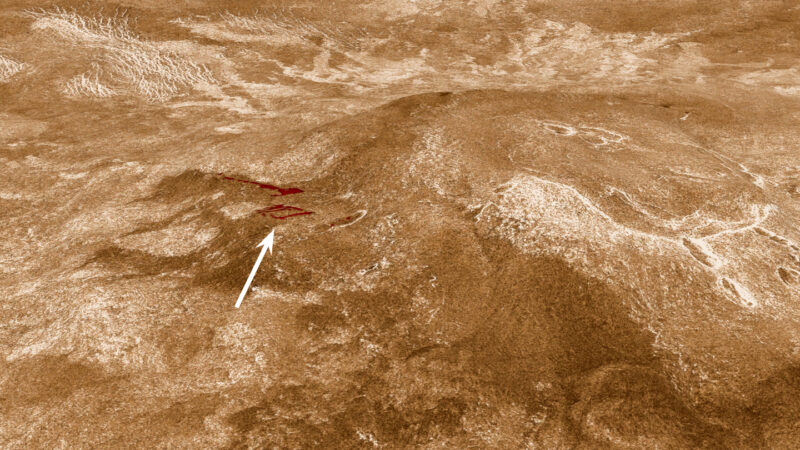For a long time, scientists thought Venus was geologically dead. But newfound evidence suggests active volcanoes may be common on this second planet from the sun. The finding emerged during a careful review of photos taken more than 30 years ago.
“This definitely is another step in the path to understanding Venus as a living, breathing world,” says Paul Byrne. He works at Washington University in St. Louis, Mo. A planetary scientist, he did not take part in the new study.
Venus is nearly Earth’s size. Some scientists had suspected its core is about as hot as our planet’s. Internal heat is the main cause of things such as volcanoes and quakes.
Between 1990 and 1992, a NASA spacecraft called Magellan snapped radar pictures of Venus. Much later, two researchers took another look at them. Last year they reported spotting a volcanic vent. It was changing shape and seemed to be spilling out lava.
For the new study, a new team of scientists scoured Magellan photos for signs of volcanic activity. It was a huge job. Venus has three times as much dry land as Earth does.
Their new review turned up two more sites showing signs of volcanic activity. One was on the western slopes of a large, low volcano. It’s called Sif Mons. The other was Niobe Planitia. This flat region hosts many volcanic vents. During two of Magellan’s passes over the planet, long winding features appeared at both sites.
The researchers thought these snake-like features might be due to landslides, not volcanoes. But the features appeared to spill across the land as lava would. They also showed up at fairly flat sites. Landslides wouldn’t be expected here, the researchers say.
“In these two instances the changes in how the surface looks in radar is best explained by there being lava flows,” Byrne agrees.
Researchers in Italy reported their finding May 27 in Nature Astronomy.
It wasn’t easy to uncover these signs of active volcanism. The reason: Magellan’s data is relatively low-resolution and Venus is so large. Byrne now suspects there are other volcanic sites on the planet. “There’s likely much more to be found,” he says.
Both he and the study authors agree that Venus could have as much volcanic activity as Earth. But we may have to wait to find out for sure. NASA is planning to launch two probes in the 2030s. They will map the surface of Venus in far more detail. That should make it easier to spot signs of active volcanoes.




